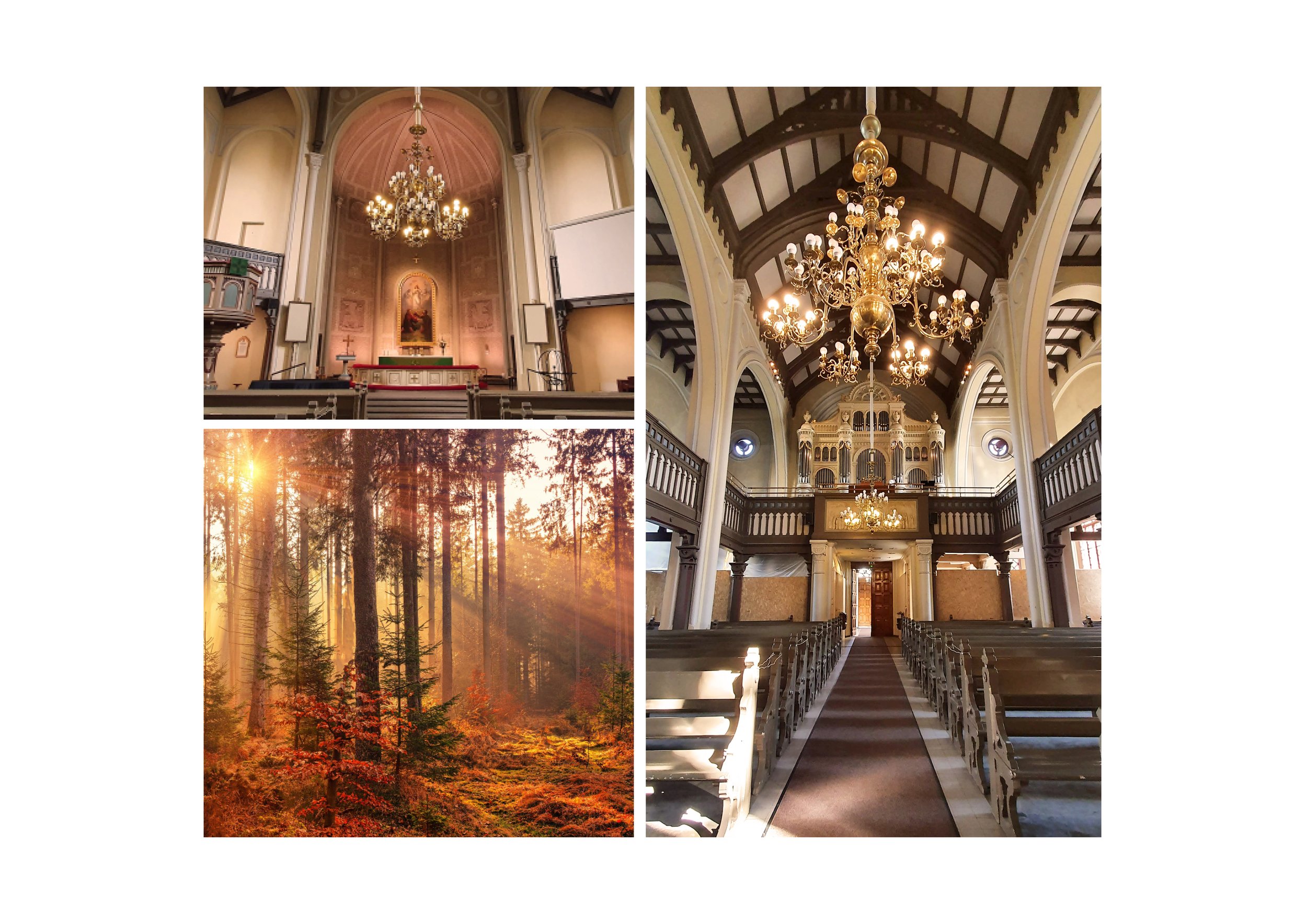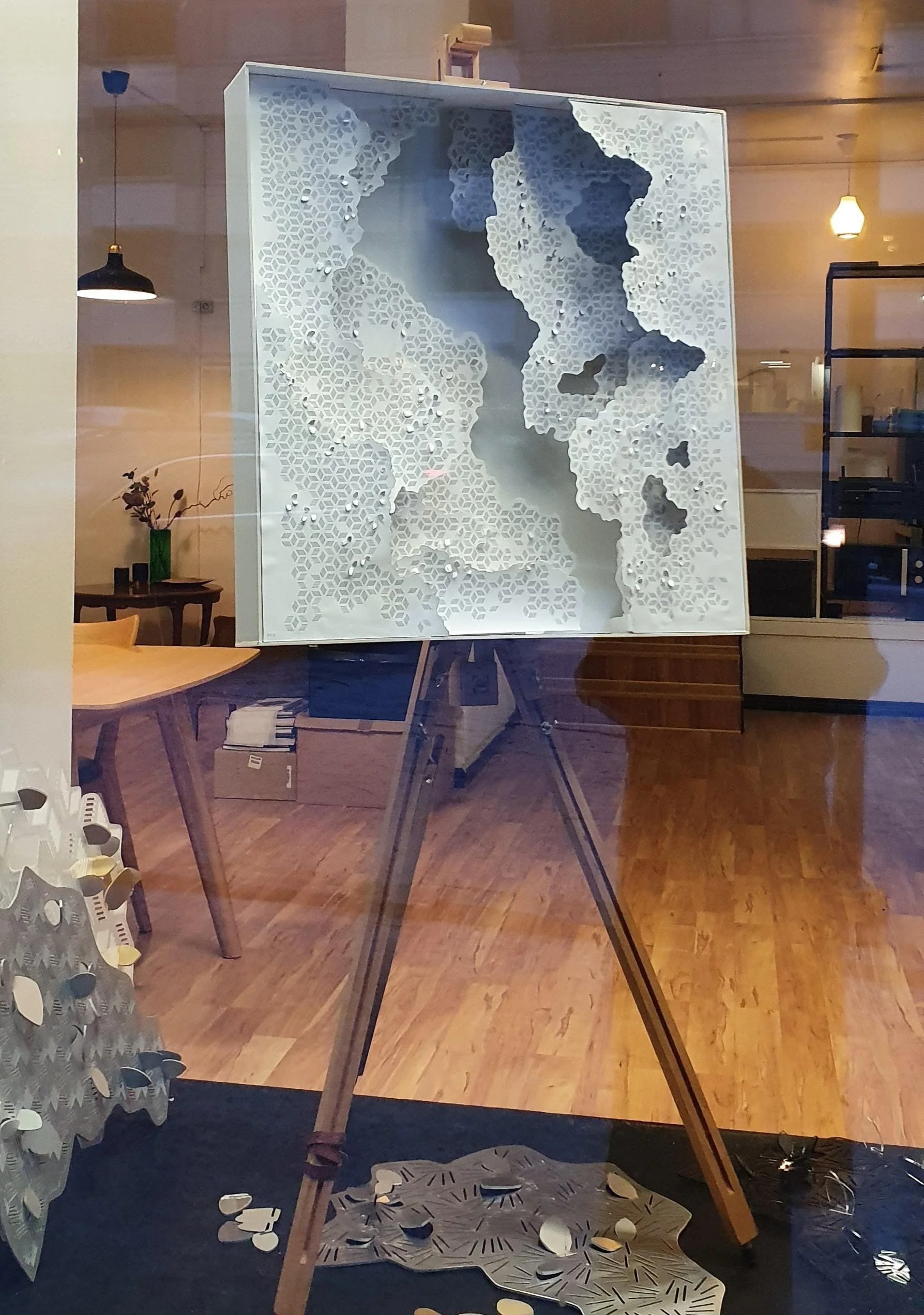The Tree that Shelters
In Finland in the Evangelical Lutheran churches, it is common to have a sculpture resembling a tree, in which the names of the baptised are attached as leaves. This symbolic gesture connects the baptised to the congregation as they become members of the parish. The work Tree that Shelters functions as this kind of ‘baptising tree’*. I have the honor to design and realise this interactive sculpture in the 140 year old Alexander Church, in Tampere. The work will be published on the first Advent in 2022.
*The baptising tree’ is a typical feature in Evangelical Lutheran churches in Finland, though not all the congregations have one. Typically, the tree is made of temporal materials such as plywood or cardboard and at the end of the year all the leaves (the names of the baptised) that have been put up that year are taken off and perhaps sent to the families of the baptised. In Tampere, the congregation wants to invest in a permanent ‘baptising tree’. The tree will be a permanent part of the 140 years old Alexander Church’s architecture. The leaves – the names of the baptised – will stay up for the decades to come. The sculpture also will thus changge year by year as there will be more and more leaves.
My proposal The Tree that Shelters was selected to be commissioned through an invite-based art competition. The driving idea behind the work is that faith – whatever it means for everyone subjectively – is something that offers us shelter in the storms of life. The work, the baptising tree, is thus a tree that welcomes one to its shelter. Instead of a tree that is seen from the front, the work shifts perspective as it is based on a view one would see when looking up though the branches while being under the shelter of a tree.
The Alexander Church in Tampere. The work will be permanently placed inside the 140 year old church building. Image: Harri Hedman / Wikimedia Commons.
The Alexander Church opened in 1881 and was at the time of its opening the main church of the newly established congregation of Tampere city. The Church is surrounded by a park (Pyynikin kirkkopuisto), which was designed by the city gardener of Tampere right after the church was built. White willow trees, elm trees and Siberian larch trees were planted at that time. Many of these old trees still exist in the park and one of the thickest European larch trees (width over 5 meters) in whole Finland grows in the park.
The interiors of Alexander Church are warmly coloured. Below are some images I’ve taken from the church’s interiors as well as inspirational image of a fall forest. In my view, forests can be seen as ‘the first churches’ in Finland. Originally a strong part of local religions before christianity, they are still indispensable places of quietness and peace for many of us.
As I was planning the work, I photographed the trees surrounding the church and observed the play of lights and shadows performed by the branches. Some of the shadows are tender and soft while others are sharp – depending on the distances of the branch. Similarly, when watching the sky through the branches a sense of distance emerges as the layers of branches form a play of sharpness and blurriness.
The work got its form from these observations. In my mind the work –the baptising tree– becomes a part of the architecture of the church in a similar manner as a tree becomes a part of a forest.
Above: The Church and the surrounding park are old! The black and white image was taken over hundred years ago.
Above on the right: Different kinds of shadows. I photographed and shot lot of these kinds of images of shadows while planning and ideating the work.
Below: The final work will consist of layers, which interpret the foliage of a tree. The layers are positioned approximately 10 cm from each other, so that a structure and depth is created. The names of the baptised – the leaves – change the appearance of the work through the years to come. In these images, I’ve used an image of an old oak, that grows in the church park.
The work is thus a sort of wall relief and will be installed on the wall on the right side of the main altar. There is an inset on the wall on this spot and the work will be placed there so that it fills the whole inset.
‘The baptising tree’ will have places for all the names of the baptised approximately for the next hundred years. Thus, the work will have around 10 000 spots, in which the name leaves can be placed. The leaves, which will be put up to the tree gradually, are realised together with the tree. Eventually, the tree will shelter the baptised through different generations as the names of everyone who are baptised are added to the tree.
One of the most crucial parts of the planning is to make it possible to put up all these 10 000 leaves in a 3 x 3 meter area. Simultaneously, I need to develop an attaching technique that is easy to use and that lasts at least next hundred years as planned. Below some of my sketches, models and prototypes.
Above the latest model of the work, in my studio window in Kuninkaankatu, Tampere. Currently, I’m testing different materials and their durability.
Follow the process in my instagram @sculptor_maija_kovari.





































